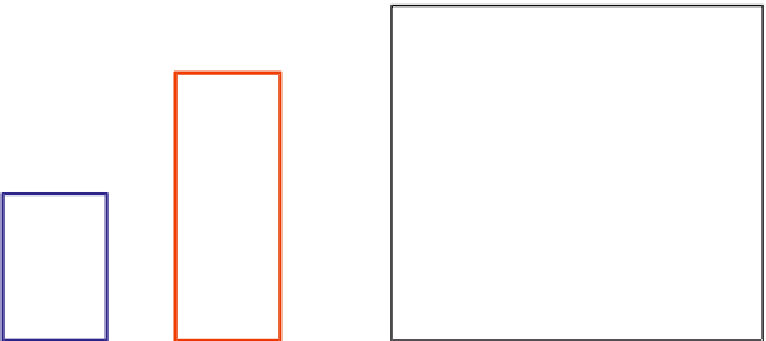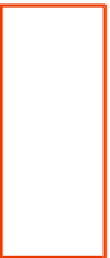Biomedical Engineering Reference
In-Depth Information
20
12
(A)
(B)
18
b
10
16
d
14
8
12
c
To
10
6
a
8
4
6
4
2
2
0
0
FIGURE 12.6
Stress-to-failure values for CPC control and CPC-chitosan-fiber specimens failed after (A) one cycle and
(B) multiple cycles. In each plot, values with dissimilar letters are significant different (
P
0.05).
Adapted from Ref.
[45]
with permission.
cycle at stress values
6 MPa. However, at slightly lower stress values (e.g.
5 MPa), none of the
specimens failed after 2
10
6
cycles. CPC-chitosan-fiber failed at higher stresses. CPC-chitosan-
fiber specimens that survived 2
10
6
cycles reached the highest stress of 10 MPa. This was 2 times
higher than the highest stress of 5 MPa for the CPC control.
Figure 12.6
plots the mean and stan-
dard deviation for specimens failed after one cycle (A), or after multiple cycles (B). When a tough
material is loaded cyclically, microdamage such as microcracks would be created in the material. As
the number of cycles increases, microcracks may accumulate and coalesce, leading to failure of the
specimen. For CPC control, at stresses
5 MPa, no specimens failed after 2 million cycles; however,
with a slight increase in the stress (
6 MPa), all the specimens failed even when a single cycle was
performed. There was little room in the stress level for gradual damage accumulation without speci-
men failure, indicating that the CPC control has a very low damage tolerance. This is likely to be
attributed to CPC being extremely brittle, and as soon as a microcrack is formed, it propagates cata-
strophically through the entire specimen. Incorporation of chitosan and polyglactin fibers reinforced
the CPC. In fatigue, the highest stress reached 10 MPa for the CPC-chitosan-fiber to survive 2 mil-
lion cycles, compared to the highest stress of 5 MPa for the CPC control. After one cycle, the stress-
to-failure for CPC-chitosan-fiber was nearly doubled compared to the CPC control. After multiple
cycles, the stress-to-failure for CPC-chitosan-fiber was 1.5 times that of the CPC control.
12.7
NANO-APATITE SCAFFOLD-HUMAN UMBILICAL CORD STEM CELL
INTERACTIONS
hUCMSCs were purchased from ScienCell laboratories (hUCMSCs #7530, Carlsbad, CA). They were
obtained from the umbilical cord of a healthy baby born by normal term delivery. The hUCMSCs




















































